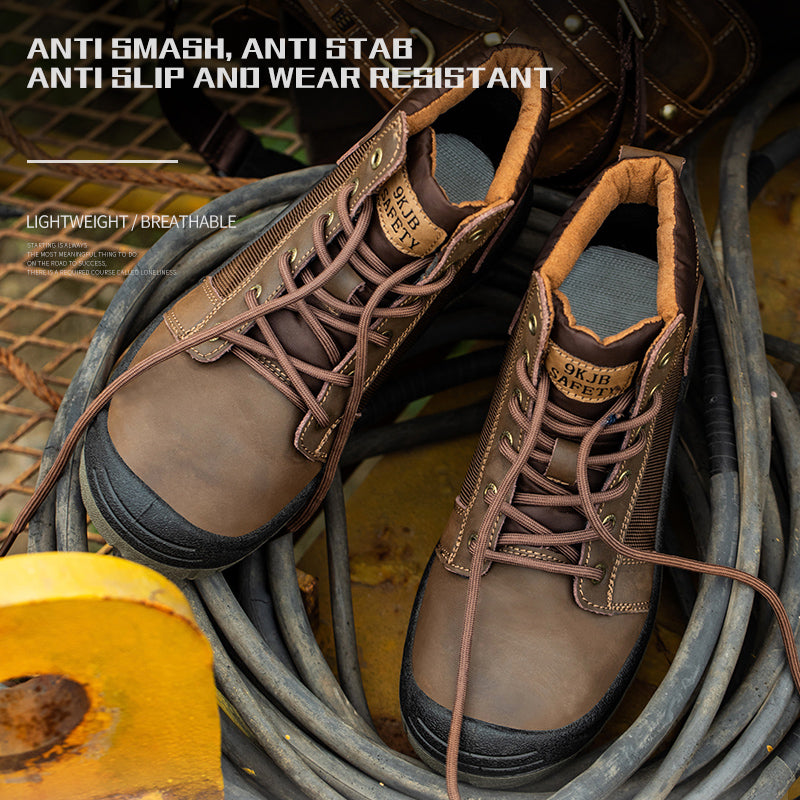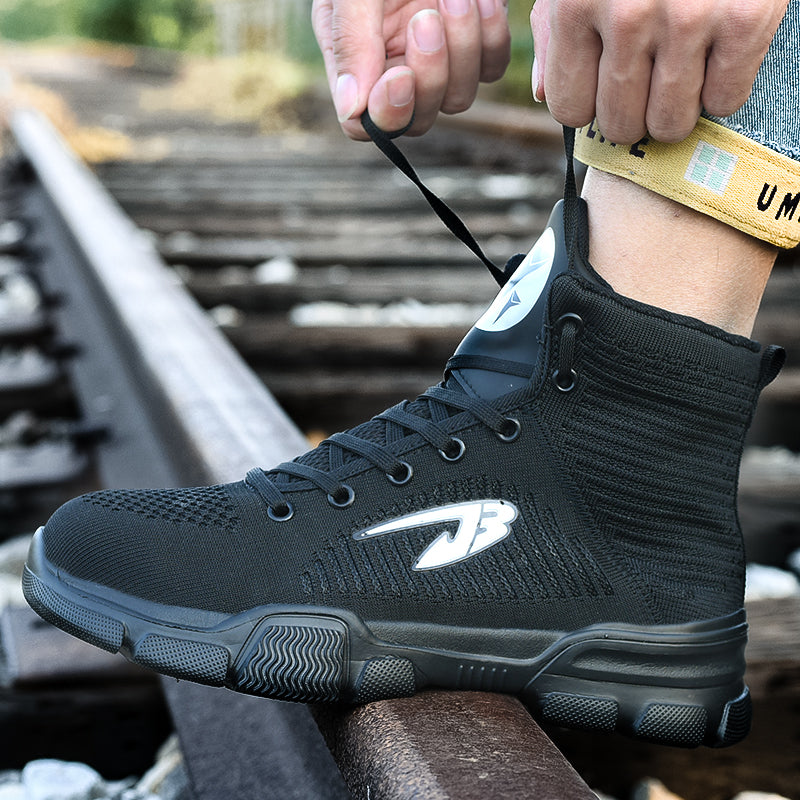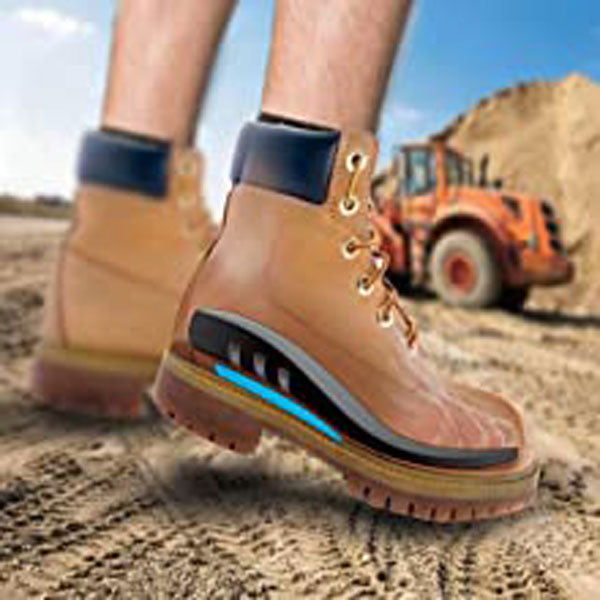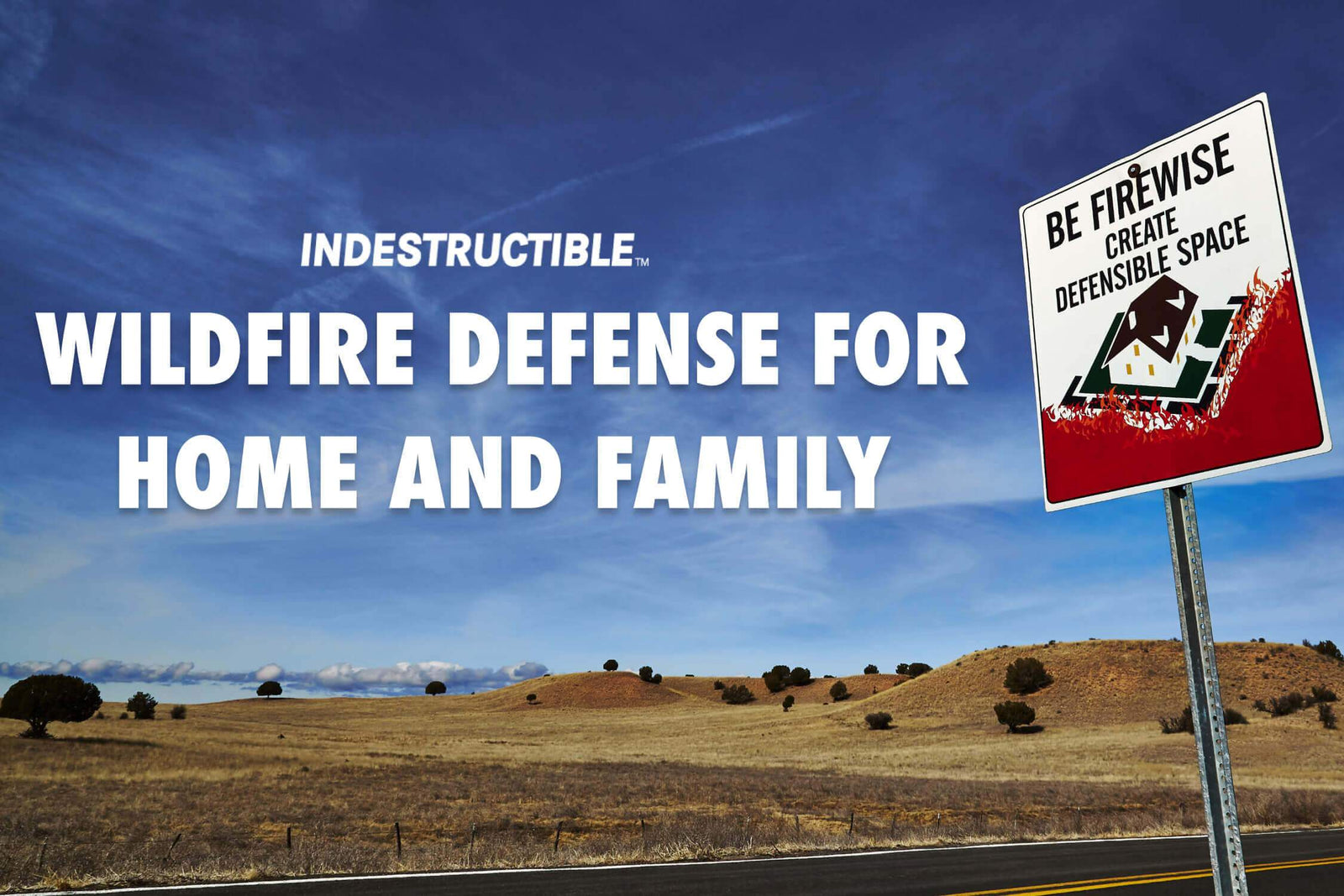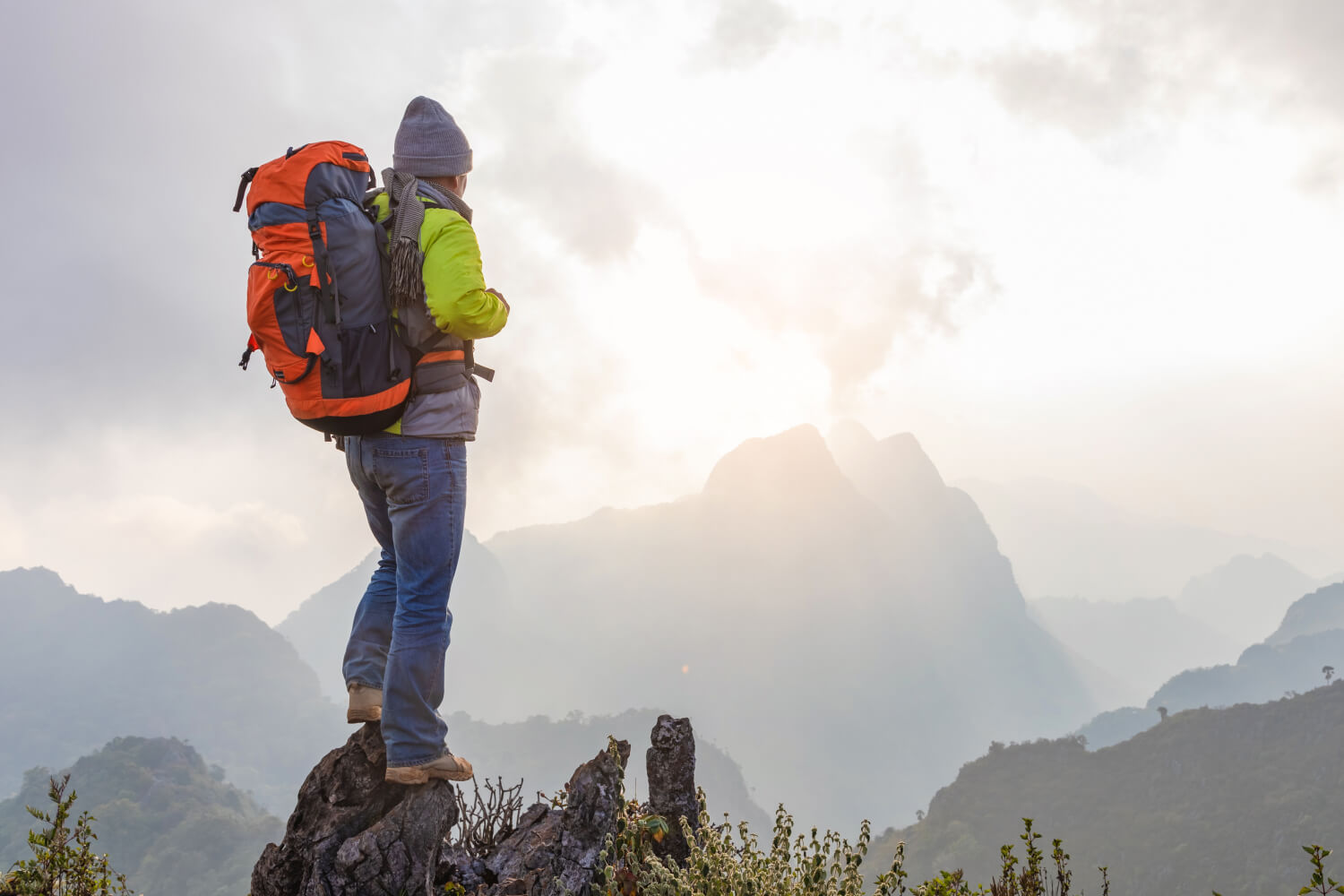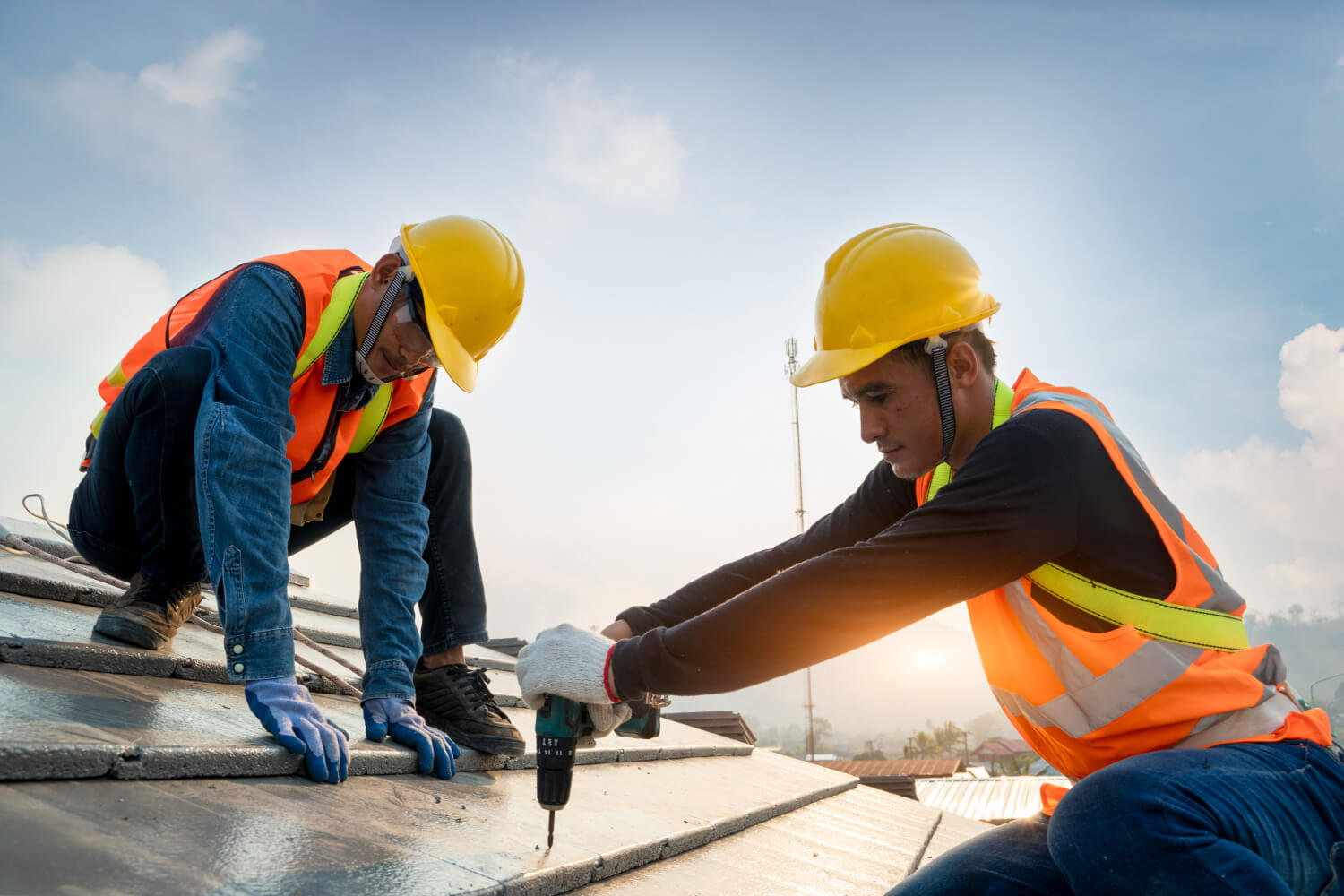Complacency is a dangerous trait to have if you live around or near any forest or wildland area. Even if you feel it will be years before your home is in danger of being destroyed by a wildfire, you should prepare.
The Climate crisis is here, causing wildfires to happen more frequently and be more intense. They can ignite anywhere and take hold in a territory faster than you expect.
The golden rule is:Always expect a wildfire to threaten your home and pray that it does not.

Improve your home's wildfire resilience.
If you live remotely or on the edge of town, create a safety zone of up to 100 feet around your home.
Take away dead brush, fallen trees, pine needles, dry leaves, or anything burnable from your home's safety zone. This includes trash, trash bins, and recycling bins.
Don't stash wood close to the house. Any woodpiles for heating your home should be at least 30 feet from your home.
Design and landscape your home with materials and plants that can help you contain a fire rather than fuel it.
- Use stone or gravel instead of mulch made of combustible materials.
- Trees should be positioned and kept trimmed. Maintain at least a 10 feet space between them.
- Landscape your edges so that any vegetation is about 5 feet from decks and structures, including your home.
- Maintain your yard with a regular mowing schedule and clean-up routine.
- Check with your local fire department for more suggestions.
Inspect your roof regularly, maintain it, and replace it when needed.
- Keep leaves and pine needles off your roof regularly. Replace missing shingles.
- Non-flammable siding is recommended for complex roofs.
- Class A roofs are the most fire-resistant. Have yours inspected and replace old roofs with a Class A one.
- Keep gutters clean of needles, leaves, and other debris.
- Make sure there are no gaps in the roofing at the edges.
- Make sure the metal flashing covers the roof edge.
- Make sure the gutter covers the roof edge.
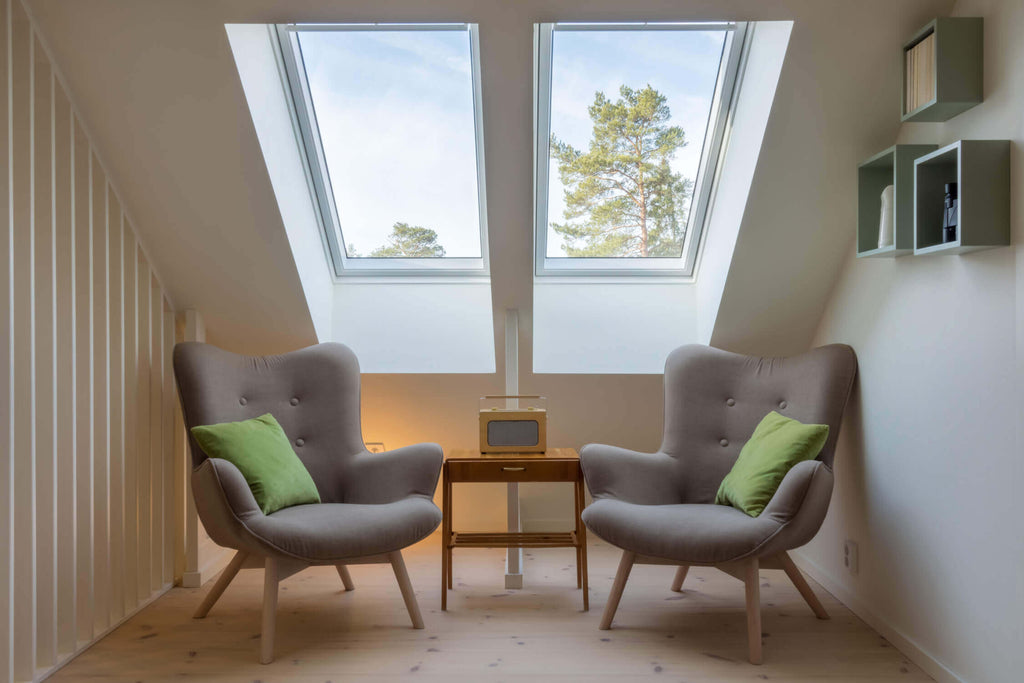
Skylights DO NOT meet Class A roof standards.
- It's crucial that you close skylights when there is a risk of fire.
- Clean skylights regularly, paying close attention along the edges.
- Remove any overhanging branches that may fall onto the skylight and break it during a fire.
Potential access of embers into your attic.
- Soffited eave construction is preferred.
- For open eaves, caulk any gaps leading to the attic, add fine mesh metal screening to vents, and keep vegetation at least 5 feet away.
- Use 1/8 in to 1/16 in metal mesh screen over vents. Bronze or stainless steel screening is preferred. Be careful paint doesn't fill any holes.
- Use specifically designed wildfire-resistant vents for gable ends.
- Better yet, avoid gable end events altogether when possible, but make sure to allow for proper airflow out of your attic still.
- Use wildfire-resistant vents for off-ridge and ridge vents.
- Try not to use vents with plastic components.
Siding concerns for wildfire resistance.
- Siding should not start below six inches from the ground.
- The ground should be nonflammable and vegetation-free for up to 5 feet out. (This is an excellent place to put a rock path around your home if you don't like bare dirt or concrete.)
Reducing your risk with windows.
- Increase break resistance with double or triple-paned windows.
- Go for tempered glass to increase break resistance.
- Don't have vegetation in front of the windows.
- Look at the framing material and replace what flammable parts you can.
- Vertical shutters can be a fire deterrent because of their vertical orientation.
- Using bronze and stainless steel screening, 1/16 inch, is more effective in reducing radiant heat.
Reducing your risk with decks and porches.
- Detached decks and raised patios are helpful.
- Use nonflammable furniture.
- Use nonflammable outdoor mats and rugs.
- Build decks with nonflammable materials.
- Coat decks with fire retardant paint and reapply regularly.
Don't let your fence bring the fire home.
- Use non-flammable fencing.
- If flammable, have the fence stop at least five feet from the house.
- Open the gate during wildfire times to break up the path of a potential fire

When the fires threaten your door.
First and foremost, understand how to evacuate. Be aware of at least two different ways out of your neighborhood. Plan where you will go and make sure everyone in your family knows your meeting place ahead of time. Also, be sure your family and friends who don't live around you know your evacuation routes and meeting place.
Create a communication plan should you get separated from one another. Utilize the social media sites you share to send direct messages if calling or texting one another directly proves difficult. Decide which website registry service you’ll use that the others know to check.
Create an alternate housing plan. If you’re unable to return home for some time, you will need shelter. Do you plan on relying on government help with others, or have you already made arrangements with friends or family outside of the danger area?
Keep your car tank full of gas and emergency supplies stashed in your car. Make sure it's parked facing your route of escape.
Do not wait to evacuate. If you're told to leave, do it immediately.
If you delay, you risk additional danger from heavy traffic, blowing embers and debris, and other road hazards.
ALL windows in the house, garage, bathroom, and attic must be closed when there is the risk of a wildfire approaching.
What if you're further away and dealing with the smoke?
More fires mean more smoke. For people living further away from the wildfire areas, this is a major concern. It's crucial that you understand the risks and reduce your smoke exposure during the wildfire season.
The most vulnerable.
Healthy adults may experience burning eyes, a runny nose, coughing, wheezing, or difficulty breathing to short-term smoke exposure. Overall, this should not pose a serious risk.
The young and old may face more serious risks from short-term smoke exposure. The fine particle matter within the mixture of gases from the wildfire smoke can be damaging.
Pregnant women are at risk, as the gas mixture can potentially negatively affect a developing fetus. Children are at risk because the gases can penetrate deep into the lungs, damaging or destroying delicate tissue.
Anyone who has heart or lung disease needs to be careful, as exposure to the smoke can result in palpitations, shortness of breath, and other symptoms. Make sure these individuals always have their medications on hand.
Protect your home from the smoke outside.
Monitor the outdoor air quality through the EPA channels and stay inside when the outdoor air quality is low due to smoke. Don't assume the air quality is good just because it looks clear outside.
Keep windows and vents closed. Replace filters on your home's air conditioners and air filtration systems regularly. (It's already recommended that you change them every six weeks for asthma sufferers.)
Window AC units should be set to "cool" and not "fan" so that they recirculate the indoor air versus pulling air in from the outside.
If you have been outside in times of poor air quality, change your clothes and your children's clothes when you come inside. Children like to be close to their adults, and they could inhale the matter that comes off of clothing.

Returning home after a wildfire strike.
Right after the disaster.
If you're separated from family members, use your communication plan. If you can, post to your social media channel or call a key family member to let the family far from you know you're okay. Bring them peace of mind at a time when they're watching the events in your area on the news.
Return home only when the officials say it's safe. If you cannot return home, enact whatever alternative shelter plan you decided on.
Comply with officials when they ask you to keep the phone lines clear, stay off emergency roads, or take other safety precautions.
Be aware of the residual dangers and keep these tips in mind before and after you're able to make the trip back to your home.
- Maintain a battery-powered radio for any emergency updates, weather forecasts, reports of flash flooding, and more updates.
- Stay clear of damaged roads or bridges that are common after wildfires.
- Stay clear of burned forests, storm channels, and creeks or rivers.
- Look out for broken or damaged power lines and gas lines and use extreme caution around trees, power poles, and other tall structures that are likely to be unstable from the fire.
- Avoid flood residue as it could be contaminated with sewage or chemicals.
When you return home.
As you approach your home, stay on "fire alert." Look for smoke or sparks throughout the house and on rooftops. Look for ash pits and hidden embers. Stay away from them as they will burn you.
Your first step is to call your insurance rep and report the damages.
Enter your home carefully and conduct your inspection.
- Be careful of broken glass, splintered wood, and dangerous objects.
- Check for the smell of gas. Turn off the power and use a battery-powered flashlight to inspect the damage. (IMPORTANT: Turn your flashlight on while you're still outside your home to avoid a battery spark igniting potential leaking gas.)
- Open the windows and avoid lighting matches or using lighters.
- Do not drink the water until emergency officials say it's okay to do so, as water systems can become polluted. If you have a well that's been damaged, have it inspected.
- Discard any food that was exposed to heat, smoke, floodwaters, or soot.
- If there is no power, check to make sure your main breaker is on. Contact your utility company if it is and there's still no power available.
- If you have one, turn off all valves in a propane tank system and leave them off until the supplier inspects your system.
- Have heating oil tank systems inspected before using them again.
- Have solar electrical systems inspected by a licensed technician to verify they're safe to use still.
This is just a small list of tips for returning home after a fire. Seek information from your local fire agency before the wildfire season hits and design your inspection plan. Follow the fire agency’s do’s and don’ts in their safety plan while you inspect and clean up after a fire.

